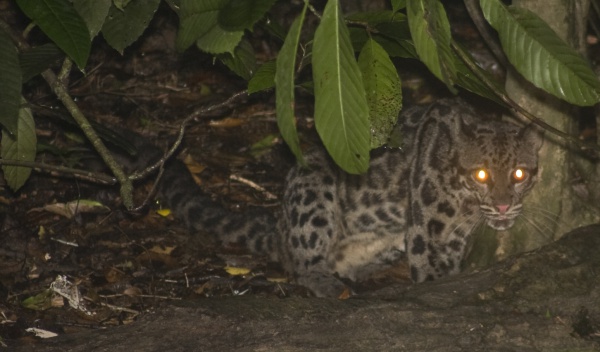Facts About Sunda clouded leopard
The Sunda clouded leopard is a captivating yet vulnerable wild cat native to the islands of Borneo and Sumatra. Unlike its mainland relative, the clouded leopard, the Sunda clouded leopard was recognized as a distinct species only in 2006. Unfortunately, this species faces significant threats from extensive deforestation on both islands.
This medium-sized cat boasts a distinctive appearance with a grayish-yellow or gray coat adorned with cloud-like markings. It has a robust build and typically weighs between 12 to 26 kg. Known by several names, including the Indonesian clouded leopard, Sundaland clouded leopard, Enkuli clouded leopard, Diard's clouded leopard, and Diard's cat, this feline is as elusive as it is fascinating.
In terms of habitat, the Sunda clouded leopard primarily resides in the lowland rainforests of Borneo and the hilly, montane regions of Sumatra. Population estimates vary, but in the Sabah region of Borneo, there are thought to be around 1,500 to 3,200 individuals. However, their numbers dwindle outside protected areas. In Sumatra, these leopards are found in several national parks, though they appear to be less common, likely due to competition with the Sumatran tiger. Fossil evidence even suggests that these leopards once roamed Java.
Much about the Sunda clouded leopard's ecology and behavior remains a mystery due to its secretive nature. It is believed to be a solitary animal that hunts primarily on the ground. Major threats include habitat destruction, illegal logging, encroachment, and poaching. Conservation efforts are underway, including listing the leopard on CITES Appendix I and protecting it in various regions. There are also research projects dedicated to studying and conserving this elusive species.
Taxonomically, the Sunda clouded leopard belongs to the genus Neofelis and has two recognized subspecies: the Bornean clouded leopard (N. d. borneensis) and the Sumatran clouded leopard (N. d. diardi). These two groups are thought to have diverged during the Middle to Late Pleistocene, likely due to geological events. The scientific name Neofelis combines Greek and Latin roots meaning "new cat." Locally, the clouded leopard is called "rimau-dahan" in Indonesia and "entulu" in Sarawak.

 Timor Leste
Timor Leste